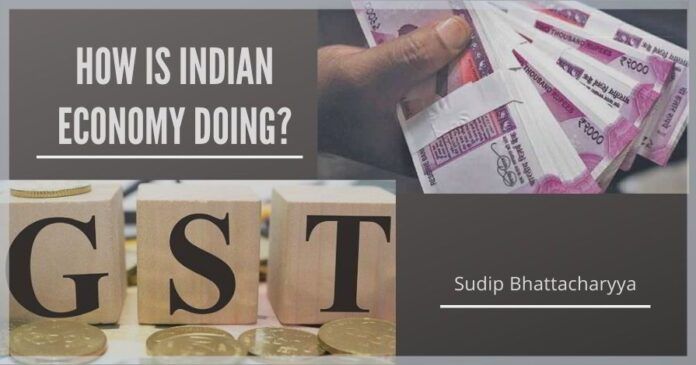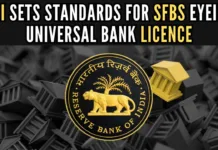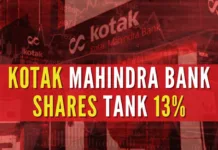
Looking ahead, the economy should pick up steam in FY 2020, which starts in April 2020, due to accommodative fiscal and monetary policy.
The economy has been very buoyant with increasing growth rate and increasing black money creation in the last decade up to 2017. In the first five years between 2009 and 2013 the inflation was also rising which led to increased profitability and rising expectation of profit and consequently a capacity built-up. Then came Demonetization and GST which gave a body blow to the black economy and small business. Simultaneously, the twin balance sheet problem exploded and crippled the financing system.
The consequence was a lack of appetite of the corporate sector to expand, weak investment sentiments, deteriorating employment potentiality. The growth of consumer goods production has virtually ground to a halt. Production of investment goods has been falling. Indicators of export-import and govt. revenue are all close to negative. These dampeners have squeezed household consumption, exacerbating
the economic woes.
Despite recent interest rate cuts by the Reserve Bank of India (RBI), a sharp
moderation in bank lending growth weighed on fixed investment.
Economic growth slowed to a six-and-a-half-year low in Q2 FY 2019, which ran from July to September, as fixed investment grew at the weakest pace in nearly five years. Despite recent interest rate cuts by the Reserve Bank of India (RBI), a sharp
moderation in bank lending growth weighed on fixed investment. On the other hand, private consumption and government consumption both grew at a faster pace in Q2.
Turning to Q3, economic growth should modestly accelerate. Bank lending growth picked up in October for the first time in three months, suggesting recent interest rate cuts might be feeding into lending. However, consumer confidence and business confidence in the manufacturing sector both decreased in the quarter, pointing to modest private consumption and fixed investment readings. Moreover, private-sector PMI averaged lower in the October–November period than in Q2.
The slowdown was evident in the FMCG, automobiles, steel, consumer durables and real estate with limited to deep impact. Further, India’s top court recently ordered several telecom carriers, including Bharti Airtel Ltd., Vodafone Idea Ltd. and many defunct ones, to pay the government as much as 920 billion rupees ($13 billion) against past dues, dealing a blow to the businesses already struggling to make profits and pare debt. The government is taking a sectoral approach to economic
issues and addressing the bottlenecks being faced by different industry sectors and the auto sector seems to have stabilized.
India’s retail price inflation rate increased to 5.54 per cent year-on-year in November 2019 from 4.62 in the previous month and compared with market expectations of 5.26 per cent. It was the highest inflation rate since July 2016, above the Reserve Bank of India’s medium-term target of 4 per cent. This is likely to put a brake on the recessionary trend. And the lowering of tax on corporate should revive the appetite
to expand.
More aggressive reforms are needed in areas like subdued consumption,agricultural productivity, labour laws, regulatory requirements and transmission/availability of credit for small businesses, enforcement of contract and registration of property etc.
Looking ahead, the economy should pick up steam in FY 2020, which starts in April 2020, due to accommodative fiscal and monetary policy. However, high levels of bad debt in the banking sector could impede lending and restrain consumption growth.
Experts expect GDP growth of 5.7% in FY 2019 and 6.4% in FY 2020, which is down 0.3 percentage points from last month’s forecast
Note:
1. The views expressed here are those of the author and do not necessarily represent or reflect the views of PGurus.
- The real Parivartan is to be ushered in now. - March 23, 2021
- When will the truth dawn on Bengalis? - March 13, 2021
- The many arguments of anti-Modi intellectuals - November 5, 2020











[…] To Read More, Please Visit Source […]